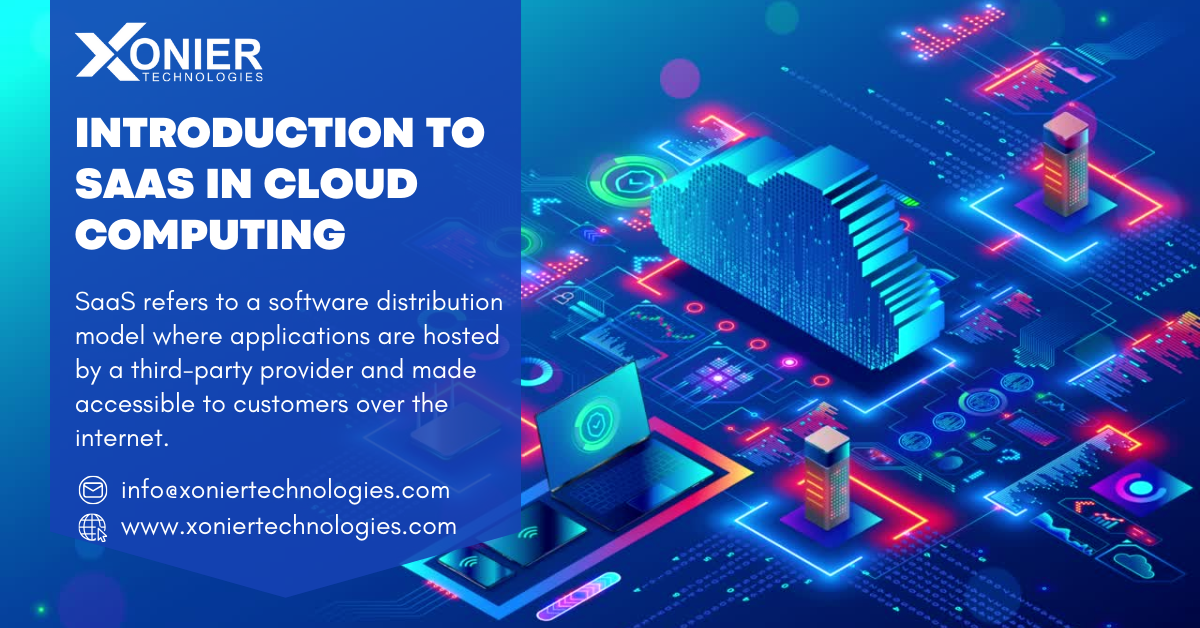In recent years, Software as a Service (SaaS) has gained immense popularity in the realm of cloud computing. This article delves into the advantages and disadvantages of leveraging SaaS within cloud computing environments.
-
Introduction to SaaS in Cloud Computing
SaaS refers to a software distribution model where applications are hosted by a third-party provider and made accessible to customers over the internet. In cloud computing, SaaS is one of the three main service models, alongside Infrastructure as a Service (IaaS) and Platform as a Service (PaaS).
-
Advantages of SaaS in Cloud Computing
- Accessibility:One of the primary advantages of SaaS in cloud computing is its accessibility. Users can access the software from any location with internet connectivity, making it convenient for remote work and collaboration.
- Cost-effectiveness: SaaS eliminates the need for organizations to invest in costly hardware infrastructure and software licensing. Instead, they can subscribe to the service on a pay-as-you-go basis, reducing upfront costs and allowing for better budget management.
- Scalability:SaaS solutions offer scalability, allowing businesses to easily scale up or down based on their changing needs. This flexibility enables organizations to adapt to fluctuations in demand without incurring significant expenses or disruptions.
- Automatic Updates:With SaaS, software updates and patches are managed by the service provider, eliminating the need for users to manually install updates. This ensures that users always have access to the latest features and security enhancements without any additional effort.
-
Disadvantages of SaaS in Cloud Computing
Dependency on Internet Connection: One of the main drawbacks of SaaS is its reliance on internet connectivity. If the internet connection is slow or unreliable, users may experience performance issues or disruptions in service.
- Data Security Concerns:Storing data in the cloud raises concerns about security and privacy. While reputable SaaS providers implement robust security measures, organizations must still entrust their sensitive data to third-party vendors, increasing the risk of data breaches or unauthorized access.
- Customization Limitations:SaaS applications may offer limited customization options compared to on-premises software solutions. Organizations with unique requirements or specific workflows may find it challenging to tailor the software to meet their exact needs.
- Service Downtime:Although SaaS providers strive to maintain high availability, service downtime can still occur due to maintenance, upgrades, or technical issues. This downtime can disrupt business operations and lead to productivity losses for users.
-
Comparison with Traditional Software Models
Compared to traditional software models, such as on-premises deployment, SaaS offers several advantages, including lower costs, easier scalability, and automatic updates. However, it also comes with its own set of challenges, such as data security concerns and customization limitations.
-
Impact on Businesses
The adoption of SaaS in cloud computing has significantly impacted businesses, enabling greater flexibility, agility, and cost savings. However, organizations must carefully weigh the advantages and disadvantages before transitioning to a SaaS-based model to ensure it aligns with their specific requirements and objectives.
-
Future Trends
As technology continues to evolve, the SaaS landscape is expected to undergo further transformation. Future trends may include advancements in artificial intelligence, machine learning, and edge computing, which could further enhance the capabilities and functionalities of SaaS applications.
SaaS offers numerous advantages in cloud computing, including accessibility, cost-effectiveness, scalability, and automatic updates. However, it also presents challenges such as dependency on internet connection, data security concerns, customization limitations, and service downtime. Businesses must carefully evaluate these factors to determine whether SaaS is the right choice for their needs.
FAQs:
- Is SaaS suitable for all types of businesses?
SaaS can benefit businesses of various sizes and industries, but it’s essential to assess specific requirements and consider factors like data security, scalability, and customization before making a decision.
- How can businesses ensure data security when using SaaS?
Businesses can enhance data security by choosing reputable SaaS providers with robust security measures in place, implementing encryption protocols, regularly monitoring access and usage, and educating employees about best practices for data protection.
- What are some alternatives to SaaS?
Alternatives to SaaS include on-premises software deployment, Platform as a Service (PaaS), and Infrastructure as a Service (IaaS). Each model offers its own set of advantages and disadvantages, depending on the organization’s specific needs and preferences.
- How can businesses mitigate the risk of service downtime with SaaS?
Businesses can mitigate the risk of service downtime by selecting SaaS providers with reliable uptime guarantees, implementing redundancy and failover mechanisms, and developing contingency plans for managing disruptions in service.
- What role does scalability play in the adoption of SaaS?
Scalability is a crucial factor in the adoption of SaaS, as it allows businesses to easily adjust their resources and capabilities to accommodate changes in demand, user base, and workload without experiencing significant disruptions or incurring additional costs.


